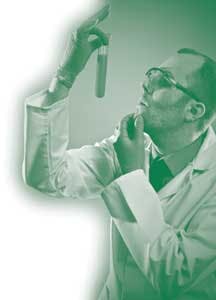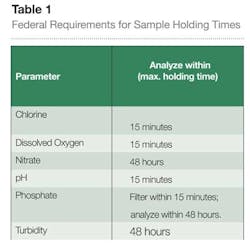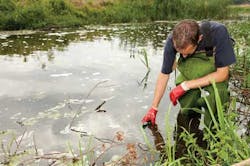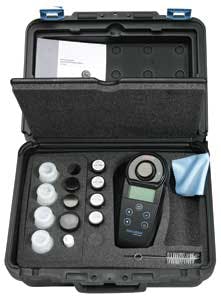| Scientist gather water samples in the field. |
Choosing a hybrid mobile/lab monitoring approach is the easy part - making it work is a lot more challenging because it requires the right equipment that analysts are able to apply in the field. As a first step, water system administrators need to decide what they want to test.
Two common field tests are for ammonia (e.g., water quality and aquaculture) and chlorine (for water distribution systems and wastewater treatment), both of which can dissipate over time and therefore benefit significantly from immediate readings rather than from delayed lab results (lab analysis is also important, which is why mobile and static tools should be used in tandem depending on use). Other tests that can easily occur in the field are pH, conductivity, turbidity and oxygen content. Again, these can also be tested in the lab, but changes in temperature can significantly alter results and ultimately provide inaccurate or incomplete information.
So what type of equipment should water scientists use in the field? There are myriad choices, but a basic field testing kit should include the following:
- Colorimeters to measure the concentration of a water sample's components using light passing through the sample, which has been reacted to give a colored species
- Turbidity meters to determine the clarity (or cloudiness) of a sample using a light source to see particulates floating in the sample
- pH meters to measure the pH of drinking water, surface/groundwater and wastewater to ensure quality and compliance of regulatory requirements
- Dissolved oxygen meters to determine oxygen availability as an essential part of water pollution control and monitoring
- Conductivity meters to provide a fast, easy way to determine the total amount of ions in solution
Of course, having the right tools for the job involves more than just function. After all, no one wants to carry a 60-pound instrument deep into the woods and try to dip it in a river. Mobile gear needs to be light enough to carry, durable enough to withstand jostling during transportation and waterproof so that it will still function properly after being submerged. We recommend that all field-based equipment should have an Ingress Protection (IP) number of 67, meaning that it is totally impervious to dust and is also protected against the effect of immersion in water between 15 cm and one meter deep.






